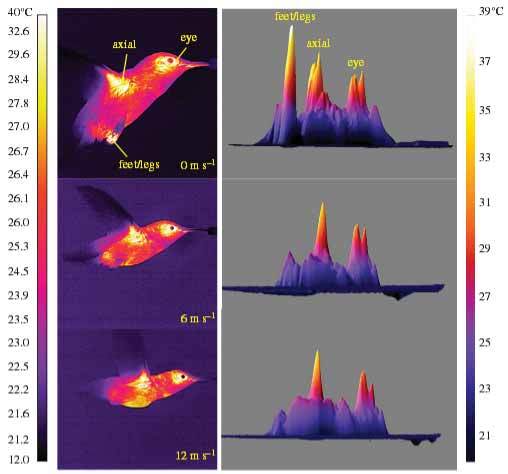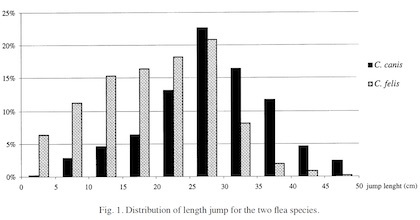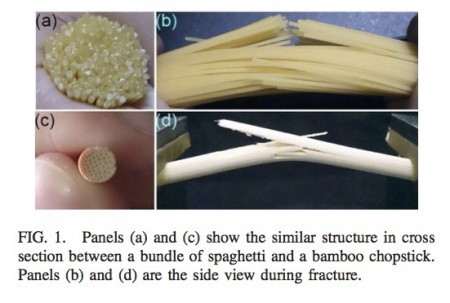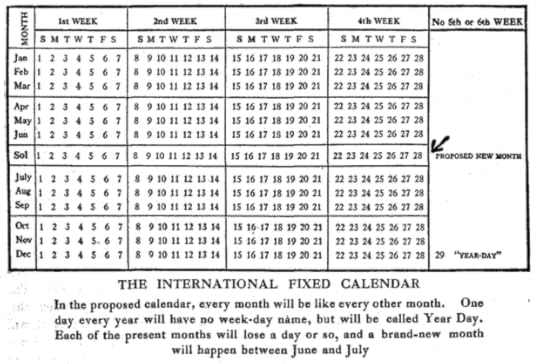Marc Abrahams's Blog, page 285
January 31, 2016
“Imagine if the window were made of ants…”
Ig Nobel Prize winner David Hu researches many questions that involve biology AND mathematics AND physics. And often, fluid dynamics. In this video, he confides, concisely, some of the biophysical ways that ants survive perilous, quickly-changing physical conditions:
The 2015 Ig Nobel Prize for physics was awarded to Patricia Yang [USA and TAIWAN], David Hu [USA and TAIWAN], and Jonathan Pham, Jerome Choo [USA], for testing the biological principle that nearly all mammals empty their bladders in about 21 seconds (plus or minus 13 seconds).
REFERENCE: “Duration of Urination Does Not Change With Body Size,” Patricia J. Yang, Jonathan Pham, Jerome Choo, and David L. Hu, Proceedings of the National Academy of Sciences, vol. 111 no. 33, August 19, 2014, pp. 11932–11937.
NOTE: David Hu will be one of the stars of the London shows on the upcoming Ig Nobel Eurotour, in March 2016.
(Thanks to Maggie Lettvin for alerting us to the video.)

January 30, 2016
Colin Raston tells of Un-boiling an Egg, and the Ig Nobel Prize
Colin Raston tells how he and colleagues found a way to partially un-boil an egg, and of how this led to an Ig Nobel Prize, in this Flinders University video:
The 2015 Ig Nobel Prize for chemistry was awarded to Callum Ormonde and Colin Raston [AUSTRALIA], and Tom Yuan, Stephan Kudlacek, Sameeran Kunche, Joshua N. Smith, William A. Brown, Kaitlin Pugliese,Tivoli Olsen, Mariam Iftikhar, Gregory Weiss [USA], for inventing a chemical recipe to partially un-boil an egg.
REFERENCE: “Shear-Stress-Mediated Refolding of Proteins from Aggregates and Inclusion Bodies,” Tom Z. Yuan, Callum F. G. Ormonde, Stephan T. Kudlacek, Sameeran Kunche, Joshua N. Smith, William A. Brown, Kaitlin M. Pugliese, Tivoli J. Olsen, Mariam Iftikhar, Colin L. Raston, Gregory A. Weiss, ChemBioChem, vol. 16, no. 3, February 9, 2015, pp. 393–396.
Here’s an ABC news report about it:

January 29, 2016
Hummingbirds get hot too
No machine can be 100% efficient – and Hummingbirds (Selasphorus calliope) are no exception. As a result, when they flap their wings (typically at around 50Hz) they generate considerable quantities of heat. To find out how much, investigators at the Department of Biology, George Fox University, OR, and the Division of Biological Sciences, University of Montana, Missoula, MT, US, set up a series of experiments.
 Measurements showed that, when hovering, the birds were consistently 8°C above ambient air temperature (though they did manage to lose some heat via leg-dangling).
Measurements showed that, when hovering, the birds were consistently 8°C above ambient air temperature (though they did manage to lose some heat via leg-dangling).
See: Powers D R, Tobalske B W, Wilson J K, Woods H A, Corder K R. ‘Heat dissipation during hovering and forward flight in hummingbirds.’ Royal Society Open Science, Dec. 2015, 2 : 150598.
Note: Lead author Dr. Powers, of the Powers Research Lab, has published a considerable body of work regarding hummingbirds.
Of related interest : Progress in Head Mounted Flying Animal Feeders

January 27, 2016
Hair (and Hare) Research [Podcast 48]
The jumping abilities of dog fleas and cat fleas, and research by researchers named Hare — these things turn up in this week’s Improbable Research podcast.
SUBSCRIBE on Play.it, iTunes, or Spotify to get a new episode every week, free.
This week, Marc Abrahams —with dramatic readings by Chris Cotsapis — tells about:
Dog flea jumping vs. cat flea jumping — “A Comparison of Jump Performances of the Dog Flea, Ctenocephalides canis (Curtis, 1826) and the Cat Flea, Ctenocephalides felis felis (Bouche, 1835),” M.C. Cadiergues, C. Joubert, and M. Franc, Veterinary Parasitology, vol. 92, no. 3, October 1, 2000, pp. 239-41. Here’s a bit of detail from the flea jumps study:

Hare on dogs — “The Domestication of Social Cognition in Dogs,” Brian Hare, et al., Science, vol. 298, no. 5598, November 22, 2002, pp. 1634-1636.
Hare on cats and dogs — “Cytogenetics in the Dog and Cat,” W.C. Hare, et al., Journal of Small Animal Practice, vol. 7, no. 9, September 1966, pp. 575-92.
Hare on Olympic speed skaters — “Body Composition of Olympic Speed Skating Candidates,” J. Hare, et al., Research Quarterly for Exercise and Sport, vol. 53, no. 2, June 1982, pp. 150-5.
The mysterious John Schedler or the shadowy Bruce Petschek perhaps did the sound engineering this week.
The Improbable Research podcast is all about research that makes people LAUGH, then THINK — real research, about anything and everything, from everywhere —research that may be good or bad, important or trivial, valuable or worthless. CBS distributes it, on the CBS Play.it web site, and on iTunes and Spotify).

January 26, 2016
Michael Scheid joins the Luxuriant Flowing Hair Club for Scientists (LFHCfS)
Michael Scheid has joined the Luxuriant Facial Hair Club for Scientists (LFHCfS). He says:
I am a PhD student in neuroscience at Northwestern University studying neurophysiology using biofeedback in monkeys. I stopped cutting my hair when I began working on my thesis to save time and money, and now, my only regret in life is all the time and money I spent not growing out long luscious luxurious flowing hair earlier.
Michael Scheid, LFHCfS
PhD student in neuroscience
Northwestern University Feinberg School of Medicine
Evanston, Illinois, USA


Marcus Byrne tells of the dung beetles and the Milky Way
Marcus Byrne tells about the dung-beetles-and-the-Milky-Way research that led to an Ig Nobel Prize for him and his colleagues, in this University of the Witwatersrand video:
That Ig Nobel Prize was awarded, in 2013, jointly in the fields of biology and astronomy, to Marie Dacke [SWEDEN, AUSTRALIA], [SWEDEN, AUSTRALIA, GERMANY], Marcus Byrne [SOUTH AFRICA, UK], Clarke Scholtz[SOUTH AFRICA], and Eric J. Warrant [SWEDEN, AUSTRALIA, GERMANY], for discovering that when dung beetles get lost, they can navigate their way home by looking at the Milky Way.
REFERENCE: “Dung Beetles Use the Milky Way for Orientation,” Marie Dacke, Emily Baird, Marcus Byrne, Clarke H. Scholtz, Eric J. Warrant, Current Biology, epub January 24, 2013.
Here’s a TEDx talk in which Byrne elucidates the relationship between dung beetles and dung:

How Iceland is a very Ig Nobel nation, and why that’s good
Iceland, though a small, physically isolated country, can boast of great Ig Nobelity. Ig Nobel Prizes, of course, are awarded for achievements that make people laugh, then think.
 Iceland displayed panache in its Ig Nobellian displays of economics, and then government.
Iceland displayed panache in its Ig Nobellian displays of economics, and then government.
BANKS. The 2009 Ig Nobel Prize for economics was awarded to the directors, executives, and auditors of four Icelandic banks — Kaupthing Bank, Landsbanki, Glitnir Bank, and Central Bank of Iceland — for demonstrating that tiny banks can be rapidly transformed into huge banks, and vice versa — and for demonstrating that similar things can be done to an entire national economy. [For background, see the Report of the Special Investigation Commission, issued April 12, 2010.]
GOVERNMENT. Iceland also exhibits the spirit of the 2010 Ig Nobel Prize for management. A report by Flore Vasseur, for Backchannel, tells what Iceland did:
While the tiny country defies the markets, it ventures into an incredible political experiment: crowdsourcing its new constitution.
A group of 950 randomly selected citizens define the major guidelines that experts will use to draft 700 pages of recommendations. A constitutional assembly of 25 officials, lawyers, singers, househusbands, and people from all generations are elected to create the final text.
The whole country joins in the experiment. On the internet, everyone can share their views on the separation of powers, transparency, access to the internet, protection of natural resources. Each session of the constitutional assembly ends with a song. Four months later, the new constitution is adopted
That 2010 Ig Nobel prize was awarded to Alessandro Pluchino, Andrea Rapisarda, and Cesare Garofalo of the University of Catania, Italy, for demonstrating mathematically that organizations would become more efficient if they promoted people at random. [Pluchino, Rapisarda, and Garofalo published a paper explaining their research: “The Peter Principle Revisited: A Computational Study,”published in the journal Physica A, vol. 389, no. 3, February 2010, pp. 467-72.]

January 25, 2016
Bells and No-bells (alpine cattle study)
Dairy cows, particularly in alpine regions (Switzerland, Austria &etc) are often seen (and heard) wearing bells. See photo:
Although it’s traditional to fit such cows with bells, a question can, and indeed has, been asked : ‘Do Bells Affect Behaviour and Heart Rate Variability in Grazing Dairy Cows?’ Answers are provided in a 2015 PLoS ONE paper by Julia Johns, Antonia Patt, and Edna Hillmann of the Institute of Agricultural Sciences, Animal Behaviour, Health and Welfare Unit, Einheit für Ethologie und Tierwohl (ETH), Zürich, Switzerland, who performed a set of experiments :
“For 3 days each, cows were equipped with no bell (control), with a bell with inactivated clapper (silent bell) or with a functional bell (functional bell). The bells weighed 5.5 kg and had frequencies between 532 Hz and 2.8 kHz and amplitudes between 90 and 113 dB at a distance of 20 cm. Data were collected on either the first and third or on all 3 days of each treatment. Whereas duration of rumination was reduced with a functional bell and a silent bell compared with no bell, feeding duration was reduced with a silent bell and was intermediate with a functional bell. Head movements were reduced when wearing a silent bell compared with no bell and tended to be reduced when wearing a functional compared to no bell. With a functional bell, lying duration was reduced by almost 4 hours on the third day of treatment compared with the first day with a functional bell and compared with no bell or a silent bell.“
The results of the experiments are summed up :
“Wearing a bell for 3 days interfered with feeding, ruminating and lying behaviours as well as head movements of cows compared with not wearing a bell, but it did not affect heart rate variability. Cows did not habituate to the bells over the 3 days of observation. The observed behavioural changes might challenge welfare if they lasted for an extended time period, but long-term observations are necessary to quantify the effects of bells on welfare.”
Bonus: The investigators provide a sound file [.wav format] of some cowbells in action.
Notes: The participants’ names were: Atela, Awina, Biber, Darling, Ela, Flecki, Iso, Marella, Padeira, Pamanda, Paranda, Perla, Pirella, Piwa, Taula, Vara, Vexana, Wia and Zulli.
The 2009 Ig Nobel Veterinary Medicine Prize was awarded to Catherine Douglas and Peter Rowlinson of Newcastle University, Newcastle-Upon-Tyne, UK, for showing that cows who have names give more milk than cows that are nameless.

January 24, 2016
The Acoustics of Breaking Chopsticks
What are the acoustics of breaking a bamboo chopstick?
According to a new paper by physicist Tzay-Ming Hong and his colleagues at National Tsing Hua University in Taiwan, it’s kind of like the acoustics of breaking a bundle spaghetti: they both apparently resemble the Gutenberg–Richter scaling law, which relates earthquake magnitude to the frequency of earthquakes with at least that magnitude. Similar relations hold for crackling noise in acoustic emissions from a variety of sources (e.g., fracturing rock, paper, and charcoal). So it’s not exactly the sound of the atom splitting (as far as we know), but it’s still rather impressive.
Here is an excerpt from the authors’ abstract:
By the use of a force-sensing detector, we establish a positive correlation between the statistics of sound intensity and the magnitude of a tremor. We also manage to derive these laws analytically without invoking the concept of a phase transition, self-organized criticality, or fractal. Our model is deterministic and relies on the existence of a structured cross section, either fibrous or layered. This success at explaining the power-law behavior supports the proposal that geometry is sometimes more important than mechanics.
Personally, I’m very pleased that the authors derived their results without having to invoke self-organized criticality. Here is the first figure from the authors’ paper.


January 23, 2016
The 13-Month International Fixed Calendar
We’re all used to a 12-month calendar, and we just deal with the fact that there are different number of days in different months, and that February doesn’t have the same number of days every year. That’s pretty crazy, right?
Some people certainly thought so, and that’s why the 13-month international fixed calendar was proposed. In the international fixed calendar, there are 13 months, which each have 28 days. It is an example of a perennial calendar, as every date always occurs on the same weekday. You may have noted that 13 times 28 is only 364, so you do need an extra day. In the international fixed calendar, there is an extra day called “Sol” between the months of June and July. Leap years are handled just as in our usual Gregorian calendar.
Before World War II, there was a big debate about adopting the international fixed calendar, and two of its big proponents was Kodak founder George Eastman, and Eastman–Kodak used the international calendar from 1928 until 1989.

The International Fixed Calendar. (Picture from George Eastman House.)
(Thanks to investigator Karen Kustedjo for bringing this to our attention.)
Other calendars: Investigator Carlos Gershenson informs us that there are Mesoamerican calendars that consist of 20 months of 18 days, plus five or six “dead” days (in which everybody apparently got drunk).

Marc Abrahams's Blog
- Marc Abrahams's profile
- 14 followers




